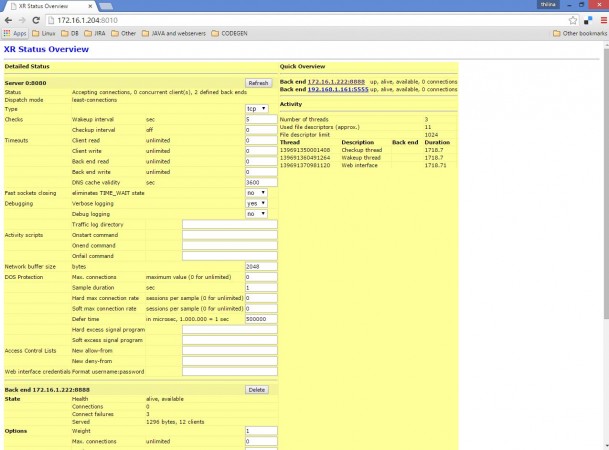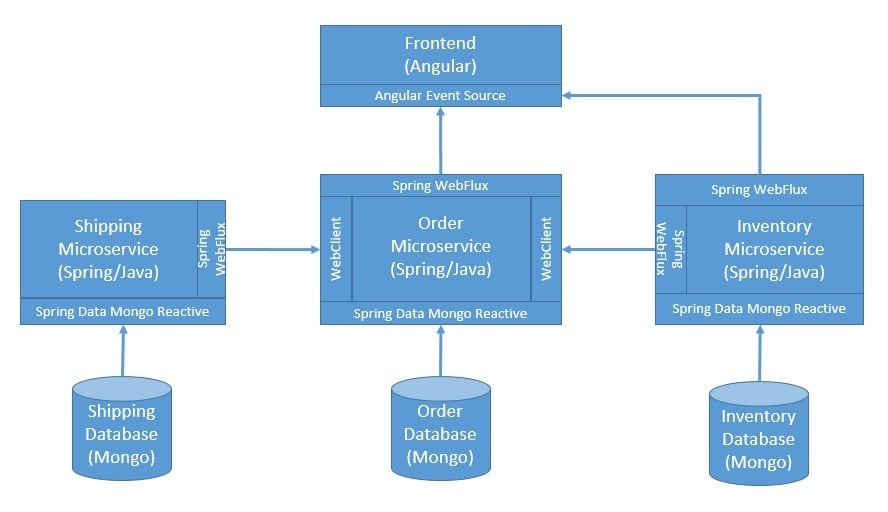Introduction: The New Era of Java Concurrency
In the ever-evolving landscape of software development, the demand for high-throughput, low-latency applications has never been greater. For years, the Java ecosystem has championed reactive programming as the premier solution for building resilient and scalable systems capable of handling immense concurrent loads. This paradigm, built on asynchronous, non-blocking principles, has become a cornerstone of modern frameworks like Spring WebFlux, Quarkus, and Micronaut. The latest Reactive Java news has been dominated by incremental improvements and wider adoption across the stack, from web layers down to the database.
However, the Java world is at a fascinating crossroads. The final release of virtual threads in JDK 21, a product of the groundbreaking Project Loom, has introduced a powerful new model for concurrency. This development doesn’t render reactive programming obsolete; instead, it enriches the developer’s toolkit, creating a dynamic interplay between two distinct philosophies for handling concurrency. This article delves into the current state of reactive Java, explores how it coexists and competes with virtual threads, and examines the latest updates in key frameworks like Hibernate Reactive that are shaping the future of high-performance Java applications. We’ll explore practical code examples, best practices, and the strategic decisions developers must now make in this new era of Java concurrency news.
Section 1: The Reactive Foundation: Core Concepts in a Modern Context
At its heart, reactive programming is a declarative programming paradigm concerned with data streams and the propagation of change. In Java, this is formalized by the Reactive Streams specification, which defines a simple contract between publishers and subscribers with a critical feature: backpressure. Backpressure is the mechanism that allows a subscriber to signal to a publisher how much data it can handle, preventing the consumer from being overwhelmed. This non-blocking, asynchronous communication is the key to building systems that are both resilient and efficient with system resources.
In the modern Java ecosystem news, Project Reactor is the dominant implementation of this specification, providing two primary types: Mono<T>, which represents a stream of 0 or 1 items, and Flux<T>, which represents a stream of 0 to N items. Frameworks like Spring Boot heavily leverage these types in their WebFlux module to create fully reactive web services.
Practical Example: A Reactive Server-Sent Events (SSE) Endpoint
Let’s consider a practical example: a service that streams real-time price updates for a stock. Using Spring WebFlux, we can create an endpoint that sends Server-Sent Events (SSE) to the client. The Flux is a natural fit for this continuous stream of data.
package com.example.reactivenews;
import org.springframework.boot.SpringApplication;
import org.springframework.boot.autoconfigure.SpringBootApplication;
import org.springframework.http.MediaType;
import org.springframework.stereotype.Service;
import org.springframework.web.bind.annotation.GetMapping;
import org.springframework.web.bind.annotation.PathVariable;
import org.springframework.web.bind.annotation.RestController;
import reactor.core.publisher.Flux;
import java.time.Duration;
import java.time.LocalDateTime;
import java.util.Random;
import java.util.concurrent.ThreadLocalRandom;
record StockPrice(String symbol, double price, LocalDateTime timestamp) {}
@Service
class PriceService {
// Generates a continuous stream of price updates for a given stock symbol
public Flux<StockPrice> getPriceStream(String symbol) {
return Flux.interval(Duration.ofSeconds(1))
.map(i -> {
Random random = ThreadLocalRandom.current();
double price = 100 + random.nextDouble(-5.0, 5.0);
return new StockPrice(symbol, price, LocalDateTime.now());
});
}
}
@RestController
class PriceController {
private final PriceService priceService;
public PriceController(PriceService priceService) {
this.priceService = priceService;
}
@GetMapping(value = "/stocks/{symbol}", produces = MediaType.TEXT_EVENT_STREAM_VALUE)
public Flux<StockPrice> streamStockPrices(@PathVariable String symbol) {
return priceService.getPriceStream(symbol);
}
}
@SpringBootApplication
public class ReactiveNewsApplication {
public static void main(String[] args) {
SpringApplication.run(ReactiveNewsApplication.class, args);
}
}
In this example, the PriceController returns a Flux<StockPrice>. Spring WebFlux understands this and automatically handles the subscription, streaming each new price update to the client as an event over a single HTTP connection. The entire pipeline is non-blocking; the thread handling the request is not held up while waiting for the next price tick. This is the classic reactive model in action, perfect for event-driven use cases and a staple of recent Spring news.
Section 2: Bridging Worlds: Reactive Persistence with Hibernate Reactive
One of the long-standing challenges in a fully reactive stack was the database layer. Traditional JDBC is a blocking API by its very nature. Calling a JDBC driver from a reactive pipeline would block the event loop thread, defeating the entire purpose of the reactive model and severely limiting scalability. This led to the rise of specifications like R2DBC (Reactive Relational Database Connectivity).

The latest Hibernate news brings a powerful solution to this problem: Hibernate Reactive. It provides the familiar, powerful object-relational mapping (ORM) capabilities of Hibernate but built on top of a non-blocking database driver (like Vert.x SQL client). This allows developers to write data access logic that integrates seamlessly into a reactive chain, without blocking. Frameworks like Quarkus have first-class support for Hibernate Reactive, making it incredibly easy to use with its Panache API.
Practical Example: A Non-Blocking Repository with Quarkus and Panache
Let’s build a simple repository to find a user by their username. Using Quarkus with Hibernate Reactive and Panache, the code is surprisingly clean and declarative. Notice the return type is Uni<T>, which is the Mutiny equivalent of Reactor’s Mono<T>.
package com.example.reactivenews.persistence;
import io.quarkus.hibernate.reactive.panache.PanacheEntity;
import io.quarkus.hibernate.reactive.panache.PanacheRepository;
import io.smallrye.mutiny.Uni;
import jakarta.enterprise.context.ApplicationScoped;
import jakarta.persistence.Entity;
// The User entity
@Entity
public class AppUser extends PanacheEntity {
public String username;
public String email;
}
// The reactive repository using Panache
@ApplicationScoped
public class UserRepository implements PanacheRepository<AppUser> {
// This method is non-blocking and returns a Uni (similar to a Mono)
public Uni<AppUser> findByUsername(String username) {
return find("username", username).firstResult();
}
}
// Example usage in a JAX-RS resource
@Path("/users")
public class UserResource {
@Inject
UserRepository userRepository;
@GET
@Path("/username/{username}")
public Uni<AppUser> getUserByUsername(@PathParam("username") String username) {
return userRepository.findByUsername(username)
.onItem().ifNull().failWith(() -> new NotFoundException("User not found"));
}
}
Here, the call to userRepository.findByUsername(username) does not block. It immediately returns a Uni<AppUser> which will be completed later when the database query finishes. The Quarkus framework manages the underlying non-blocking I/O and thread handling. This seamless integration of reactive principles into the data layer is a significant milestone and a key piece of recent Jakarta EE news, as it aligns with the broader goal of modernizing enterprise Java for cloud-native environments.
Section 3: The Loom Effect: Virtual Threads vs. Reactive Streams
The most significant development in recent JVM news is undeniably Project Loom, which delivered virtual threads as a final feature in Java 21. Virtual threads are lightweight threads managed by the JVM, not the operating system. A single OS thread can run millions of virtual threads, making them incredibly cheap to create and park (block).
This fundamentally changes the concurrency game. With virtual threads, developers can write simple, sequential, blocking-style code, and the JVM will ensure it runs efficiently without blocking precious OS threads during I/O operations. This approach, often called “structured concurrency,” stands in contrast to the explicit asynchronous composition of reactive programming with its chain of operators like flatMap, map, and zip.
Let’s compare the two styles for a common use case: fetching data from two independent remote services and combining the results.
Practical Example: Reactive vs. Virtual Threads for API Orchestration
The Reactive Way (Spring WebClient)
Using WebClient, we make two non-blocking calls and use Mono.zip to combine their results when both are complete.
package com.example.reactivenews.comparison;
import org.springframework.web.reactive.function.client.WebClient;
import reactor.core.publisher.Mono;
record UserData(String userId, String name) {}
record UserOrders(String userId, int orderCount) {}
record UserProfile(String userId, String name, int orderCount) {}
public class ReactiveOrchestrator {
private final WebClient webClient = WebClient.builder().baseUrl("http://api.example.com").build();
public Mono<UserProfile> getUserProfileReactive(String userId) {
Mono<UserData> userDataMono = webClient.get()
.uri("/users/{id}", userId)
.retrieve()
.bodyToMono(UserData.class);
Mono<UserOrders> userOrdersMono = webClient.get()
.uri("/orders/user/{id}", userId)
.retrieve()
.bodyToMono(UserOrders.class);
return Mono.zip(userDataMono, userOrdersMono)
.map(tuple -> new UserProfile(userId, tuple.getT1().name(), tuple.getT2().orderCount()));
}
}
This code is fully non-blocking but requires understanding reactive operators. The control flow is declarative and defined by the reactive chain.

The Virtual Threads Way (Standard HttpClient)
With virtual threads, we can use a standard blocking `HttpClient` and write simple, sequential code. When `httpClient.send()` is called, the virtual thread is “parked,” freeing the OS thread for other work. The code is much easier to read and debug.
package com.example.reactivenews.comparison;
import com.fasterxml.jackson.databind.ObjectMapper;
import java.net.URI;
import java.net.http.HttpClient;
import java.net.http.HttpRequest;
import java.net.http.HttpResponse;
import java.util.concurrent.Executors;
import java.util.concurrent.Future;
// Records from previous example are reused
public class VirtualThreadOrchestrator {
private final HttpClient httpClient = HttpClient.newHttpClient();
private final ObjectMapper objectMapper = new ObjectMapper();
public UserProfile getUserProfileVirtual(String userId) throws Exception {
// Use a virtual-thread-per-task executor
try (var executor = Executors.newVirtualThreadPerTaskExecutor()) {
Future<UserData> userDataFuture = executor.submit(() -> {
HttpRequest request = HttpRequest.newBuilder()
.uri(new URI("http://api.example.com/users/" + userId))
.build();
HttpResponse<String> response = httpClient.send(request, HttpResponse.BodyHandlers.ofString());
return objectMapper.readValue(response.body(), UserData.class);
});
Future<UserOrders> userOrdersFuture = executor.submit(() -> {
HttpRequest request = HttpRequest.newBuilder()
.uri(new URI("http://api.example.com/orders/user/" + userId))
.build();
HttpResponse<String> response = httpClient.send(request, HttpResponse.BodyHandlers.ofString());
return objectMapper.readValue(response.body(), UserOrders.class);
});
UserData userData = userDataFuture.get(); // .get() parks the virtual thread, not the OS thread
UserOrders userOrders = userOrdersFuture.get();
return new UserProfile(userId, userData.name(), userOrders.orderCount());
}
}
}
The latest Java virtual threads news confirms that this style offers tremendous performance for I/O-bound workloads while maintaining code simplicity. It’s a paradigm shift that challenges the “reactive everything” mantra of the past few years.
Section 4: Best Practices, Optimization, and Ecosystem Synergy
With two powerful concurrency models at our disposal, the key question becomes: when to use which? The decision is nuanced and depends on the specific problem you are solving.
Choosing the Right Tool for the Job
- Use Reactive Streams when: Your logic is fundamentally event-driven. You are processing infinite streams of data (like our stock ticker example), require fine-grained control over data flow with complex operators (windowing, buffering), or need sophisticated backpressure handling. It excels at “data in motion.”
- Use Virtual Threads when: Your application is I/O-bound and involves orchestrating multiple blocking calls (e.g., microservice “fan-out”). The logic is largely request-response. You want to leverage the vast ecosystem of existing Java libraries that use blocking APIs without having to find reactive alternatives. It excels at simplifying “code in motion.”
Frameworks are Embracing Both
-(1).png)
The good news is that you don’t have to make an all-or-nothing choice. The latest Spring Boot news highlights that Spring Boot 3.2 and later offer simple configuration to run entire applications on virtual threads. Similarly, Quarkus and Helidon are providing robust support for both reactive and imperative (with virtual threads) models, sometimes even within the same application. This flexibility is a testament to the maturity of the Java ecosystem.
Debugging and Testing Considerations
A common pitfall of reactive programming is debugging. Stack traces can be long and cryptic, losing the context of the original call. Tools like Project Reactor’s BlockHound can detect accidental blocking calls in a reactive pipeline, which is crucial for maintaining performance. For testing, libraries like StepVerifier are essential for verifying the behavior of a Flux or Mono in a declarative way.
Conversely, debugging code running on virtual threads is often simpler because the stack traces look familiar and sequential, reflecting the way the code was written. This improved developer experience is a major selling point of Project Loom news.
Conclusion: A Richer Toolkit for the Modern Java Developer
The narrative in the Reactive Java news has evolved. It’s no longer just about the adoption of reactive streams; it’s about a broader conversation on concurrency. Reactive programming remains an incredibly powerful and relevant paradigm, especially for building highly elastic, event-driven systems that need to manage data flow with precision. The maturity of libraries like Project Reactor and Hibernate Reactive demonstrates its strength and readiness for enterprise-grade applications.
Simultaneously, the arrival of virtual threads in Java 21 has provided a revolutionary alternative that brings massive scalability to simple, imperative code. It democratizes high-concurrency programming, making it accessible without the steep learning curve of reactive frameworks. The future of Java development isn’t a battle between reactive and virtual threads; it’s a synergy. Developers now have a more complete and nuanced toolkit to build the next generation of performant, scalable, and maintainable applications, solidifying Java’s position as a top-tier platform for modern, cloud-native development.

